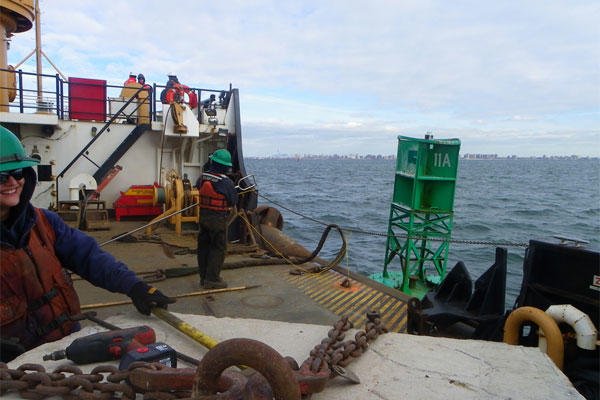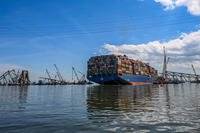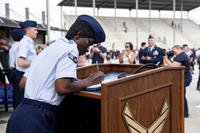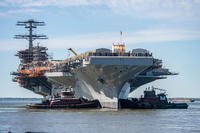Just hours after “Superstorm” Sandy had made landfall, Coast Guard Cutter Willow was deployed. Homeported in Newport, R.I., Willow is a 225-foot buoy tender with the ability to perform many of the Coast Guard missions. But it wasn’t icebreaking or enforcing laws the Eastern seaboard needed. It was safety on the waterways.
Sandy’s strong winds and waves wreaked havoc on the port of New York and New Jersey’s infrastructure and countless navigational aids were askew. The Coast Guard’s aids to navigation mission is an essential link that helps sustain the maritime transportation system and Willow’s crew was ready to get to work to rectify and alleviate the devastation.
As Willow steamed toward New York, there was limited information regarding the condition of navigational aids in the harbor. The only way to verify the status of aids was from onshore or aircraft flying overhead.
Willow – with four crewmembers from Willow’s sister ship, Coast Guard Cutter Juniper, aboard – steamed overnight and arrived the next morning. Willow was the first Coast Guard aids to navigation asset to arrive on scene and upon reaching New York, Willow discovered extensive damage.
Sandy had left debris in the water and many of the aids to navigation that mark key waterways – including the Sandy Hook Channel, Ambrose Channel and Shrewsbury Channel – were either off station or missing.
With thousands of vessels transiting the waterways – from tugs to cruise ships to ferries – these buoys ensure safe passage. Willow’s crew began working the aids to in turn re-open local channels so tugs, barges, gasoline tankers, container ships, passenger ferries and cruise ships could begin to transit through the channel.
The waterways around New York and New Jersey have always been vital to the city and nation’s commerce and growth. However, they became even more important when Sandy made landfall and left several million residents without power, gasoline or home heating oil.
With millions depending on them, Willows crew took their work seriously, and they did some serious work. More than 330,000 pounds of weight moved across Willow’s buoy deck and just hours later the waterways began to open up.
Having these channels open has allowed barges to ferry fuel from the gasoline tankers anchored outside the harbor to trucks waiting on piers. This in turn has allowed citizens to travel with vehicles, heat their houses and prevent food items from spoiling.
Crews continue to put in long hours and use their technical expertise to get the job done. If you live on the Eastern seaboard near the ports of New York and New Jersey, make sure you thank your local Coast Guard crews who are working to keep the waters in your region safe!



























